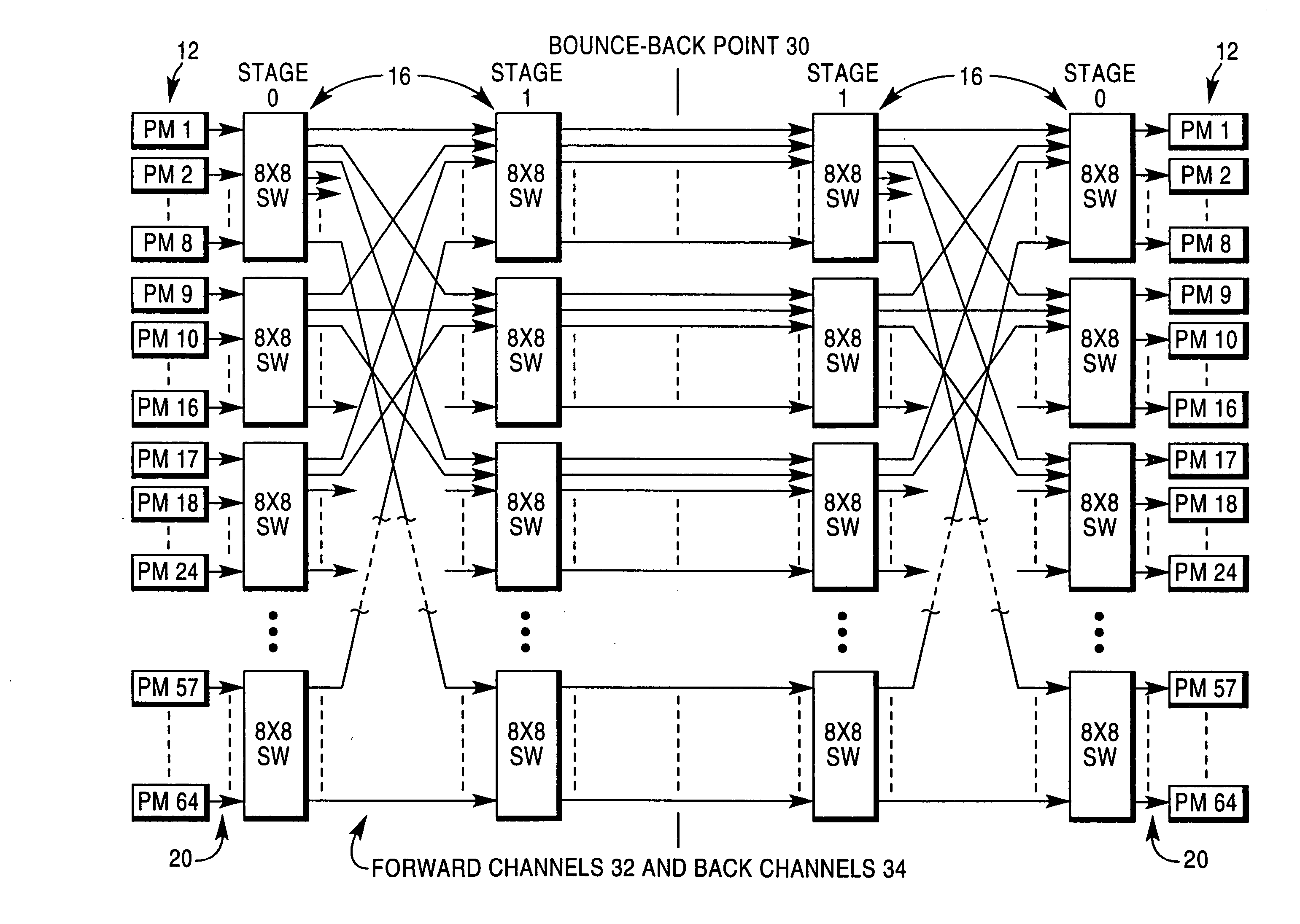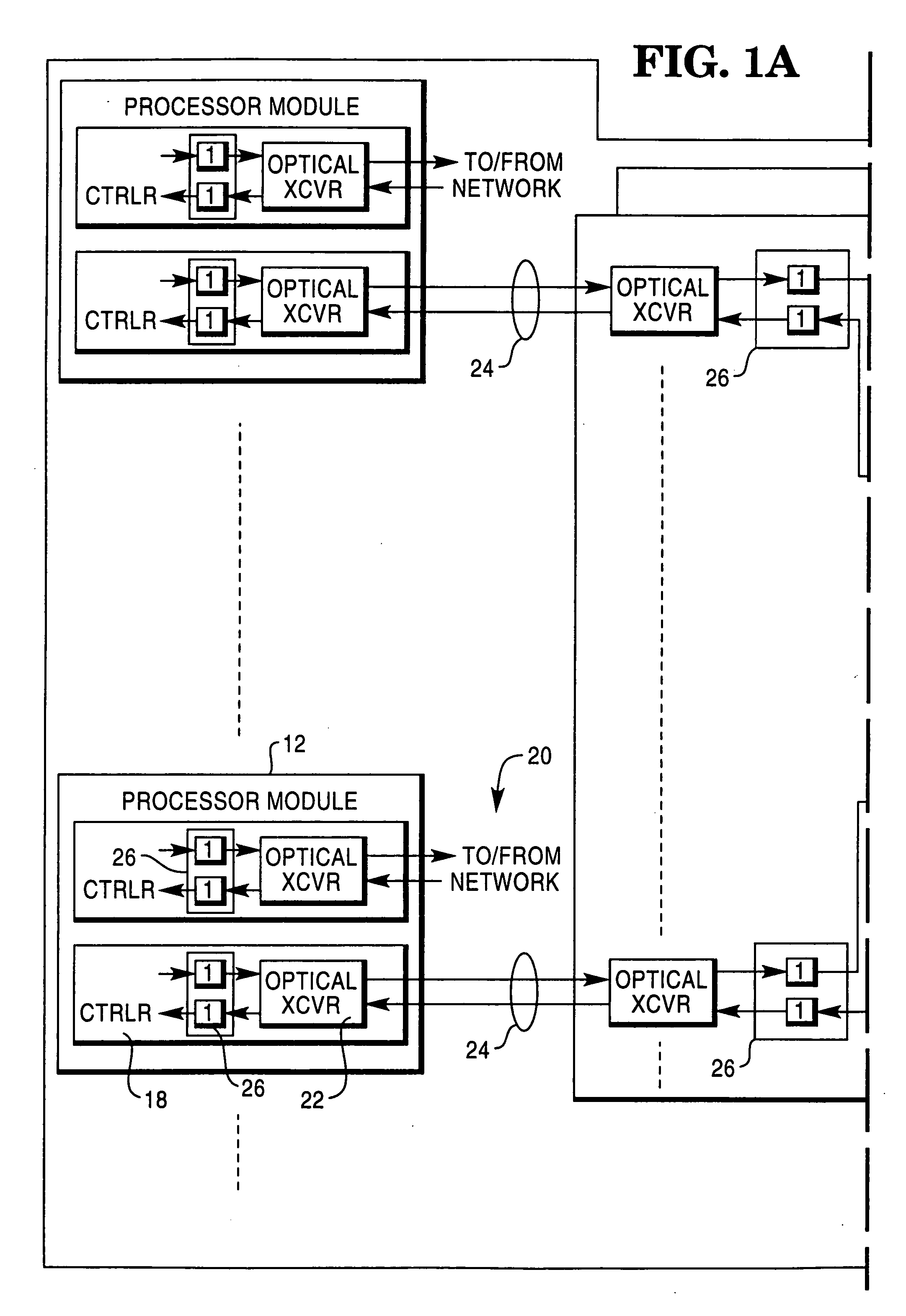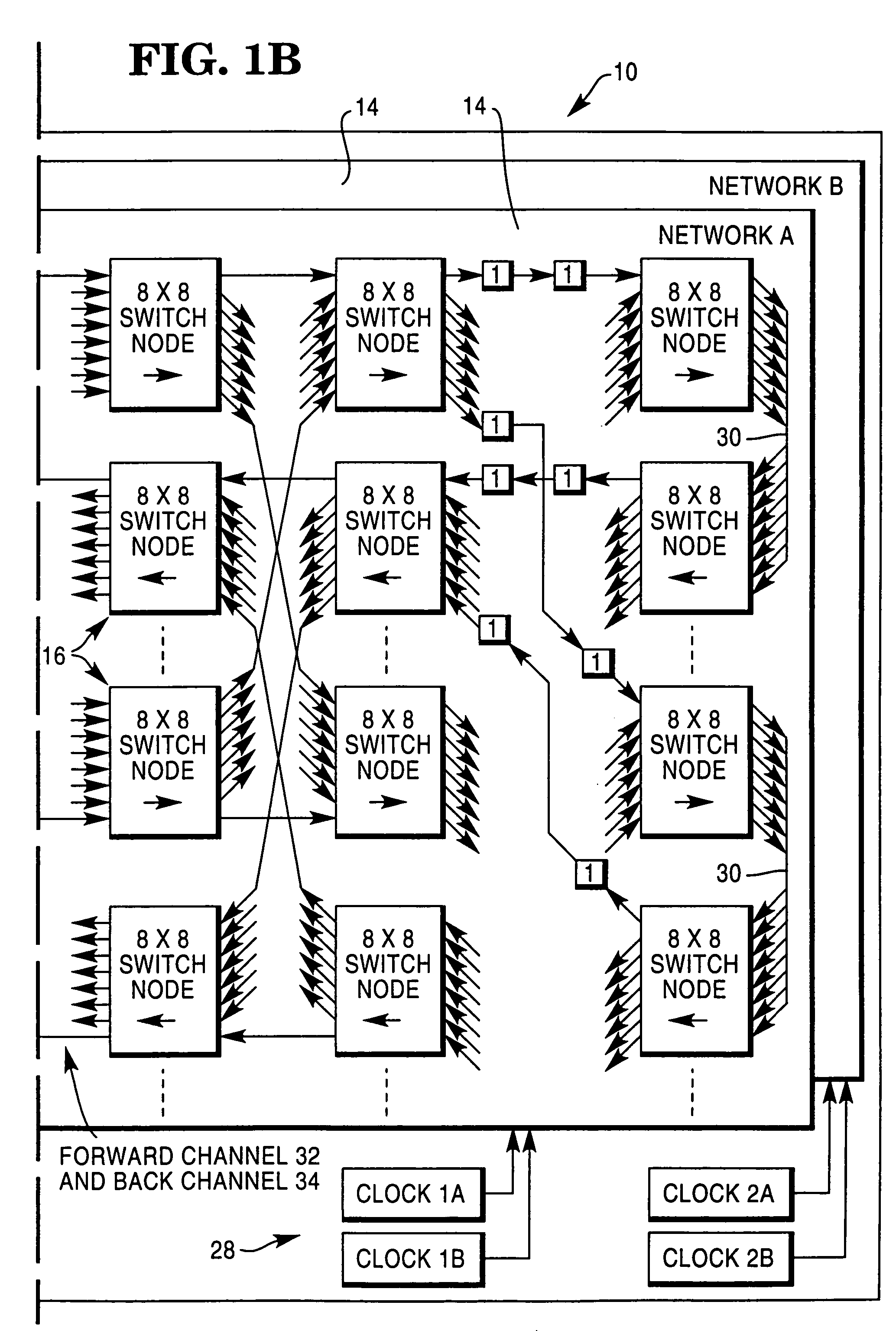Reconfigurable, fault tolerant, multistage interconnect network and protocol
a multi-stage interconnect and network technology, applied in the field of computer networks, can solve the problems of unmanageable cabling, achieve the effects of enhancing fault tolerance, reducing contention, and simple installation
- Summary
- Abstract
- Description
- Claims
- Application Information
AI Technical Summary
Benefits of technology
Problems solved by technology
Method used
Image
Examples
Embodiment Construction
[0049] In the following description of the preferred embodiment, reference is made to the accompanying drawings which form a part hereof, and in which is shown by way of illustration a specific embodiment in which the invention may be practiced. It is to be understood that other embodiments may be utilized and structural changes may be made without departing from the scope of the present invention.
1. General Description
[0050]FIG. 1 illustrates the components of the present invention, which comprises a general purpose multiprocessor computer system 10 capable of massively parallel processing. The components illustrated in FIG. 1 include processor modules (PMs) 12, networks 14, switch nodes 16, controllers 18, network I / O ports 20, optical transceivers 22, optical fibers 24, Transparent Asynchronous Transceiver Interface (TAXI) transceivers 26, redundant master clocks 28, bounce-back points 30, forward channels 32, and back channels 34.
[0051] The PMs 12 are common platform processo...
PUM
 Login to View More
Login to View More Abstract
Description
Claims
Application Information
 Login to View More
Login to View More - R&D
- Intellectual Property
- Life Sciences
- Materials
- Tech Scout
- Unparalleled Data Quality
- Higher Quality Content
- 60% Fewer Hallucinations
Browse by: Latest US Patents, China's latest patents, Technical Efficacy Thesaurus, Application Domain, Technology Topic, Popular Technical Reports.
© 2025 PatSnap. All rights reserved.Legal|Privacy policy|Modern Slavery Act Transparency Statement|Sitemap|About US| Contact US: help@patsnap.com



